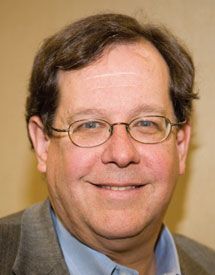Publication
Article
Oncology Live®
Recent Advances Put Focus on Tumor Microenvironment
Author(s):
The impact that the tumor microenvironment has on the survival and growth of cancer cells is becoming increasingly well defined on several fronts.

Oliver Sartor, MD
Medical Director
C.E. and Bernadine Laborde Professor of Cancer Research
Professor, Department of Medicine
Department of Urology
Tulane Cancer Center
New Orleans, LA
The impact that the tumor microenvironment has on the survival and growth of cancer cells is becoming increasingly well defined on several fronts, suggesting it is time to consider such approaches under the mantle of stromal targeted therapies, according to Oliver Sartor, MD.
Sartor and Oyvind Bruland, MD, a professor of Clinical Oncology at the University of Oslo in Norway, summarized advances in stromal targeted therapies in prostate cancer and renal cell carcinoma in an editorial in Clinical Genitourinary Cancer in September (2011;9(1):1-2).
“The old concept is we’re going to take the cancer cell and we’re going to kill it,” Sartor said in an interview. “Now we’re into a new mode of talking about the tumor microenvironment.
“What I’m trying to do is to organize people’s thoughts in a new way to come up with a structure that will allow us to think a little differently and to move forward as well,” he said.
The editorial cited advances in 3 areas:
- Radiopharmaceuticals targeted to the bone stromal, starting with beta-emitting strontium 89 and samarium lexidronam 153 to relieve bone-metastatic castrate-resistant prostate cancer (CRPC) and progressing to recent research on alpha-emitting radium-223
- Bisphosphonates such as clodronate, which may prolong survival in newly metastatic CRPC, and denosumab, which delays bone metastases in prostate cancer
- Antiangiogenic agents for the treatment of metastatic renal cell carcinoma, including various anti-VEGF strategies.
The common thread is that the agents manipulate the stroma, the elements of the matrix supporting tumor cells, or the “soil” in Paget’s well-known “seed and soil” hypothesis, the authors said.
“Research into the mechanisms of ‘soil’ targeting by tumor cells is now active both at the level of pathophysiology and therapeutic development,” they wrote.
Sartor said he was motivated to write the editorial by the ALSYMPCA clinical trial data demonstrating that radium-223 chloride improved survival and time to skeletal-related events in CRPC. (Read more >>> Survival Benefit Shown With Investigational Alpha-Emitting Radiopharmaceutical in Men With Hormone Resistant Metastatic Prostate Cancer)
He said the trial results were the latest indication that research into genitourinary cancers is leading oncology in stromal targeted therapies.










